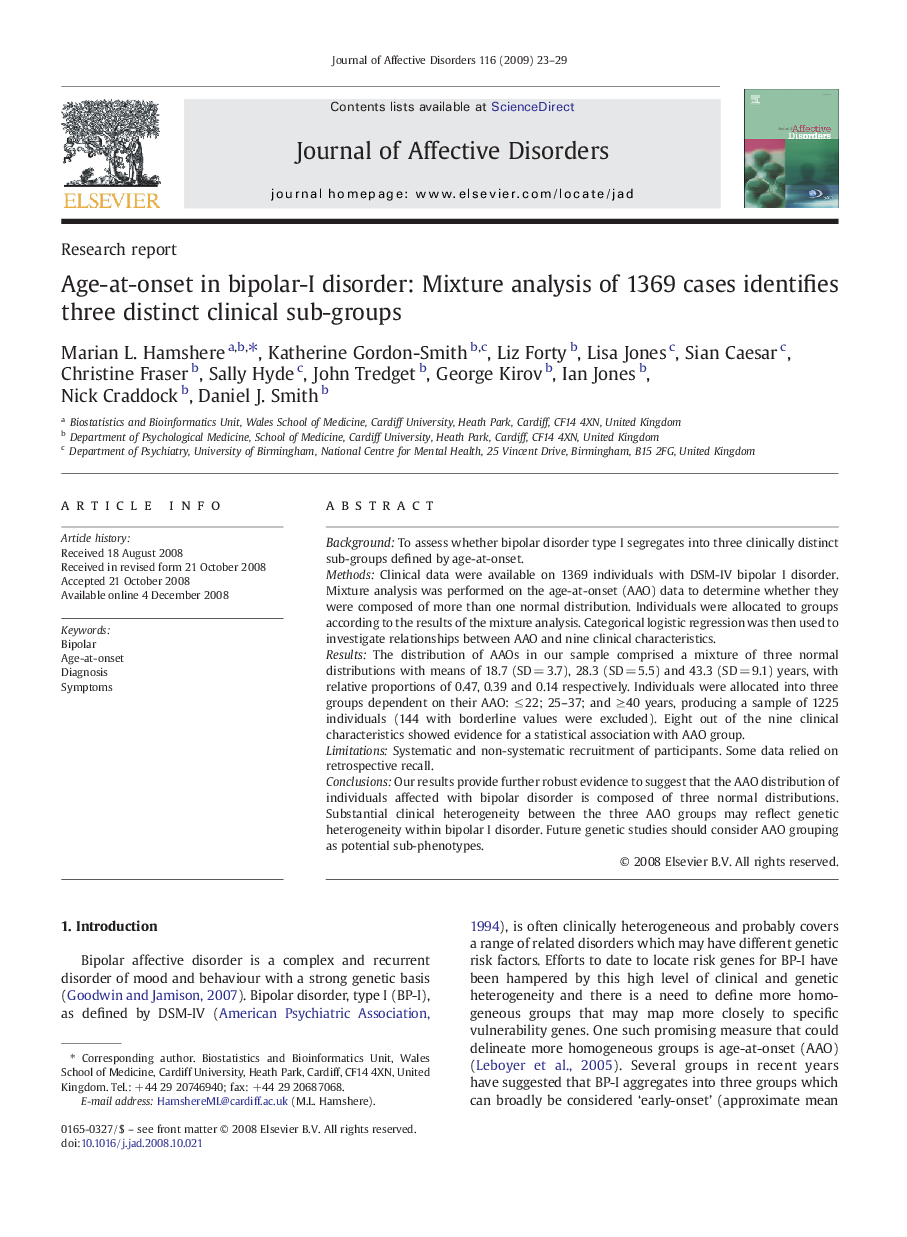| Article ID | Journal | Published Year | Pages | File Type |
|---|---|---|---|---|
| 4187048 | Journal of Affective Disorders | 2009 | 7 Pages |
BackgroundTo assess whether bipolar disorder type I segregates into three clinically distinct sub-groups defined by age-at-onset.MethodsClinical data were available on 1369 individuals with DSM-IV bipolar I disorder. Mixture analysis was performed on the age-at-onset (AAO) data to determine whether they were composed of more than one normal distribution. Individuals were allocated to groups according to the results of the mixture analysis. Categorical logistic regression was then used to investigate relationships between AAO and nine clinical characteristics.ResultsThe distribution of AAOs in our sample comprised a mixture of three normal distributions with means of 18.7 (SD = 3.7), 28.3 (SD = 5.5) and 43.3 (SD = 9.1) years, with relative proportions of 0.47, 0.39 and 0.14 respectively. Individuals were allocated into three groups dependent on their AAO: ≤ 22; 25–37; and ≥ 40 years, producing a sample of 1225 individuals (144 with borderline values were excluded). Eight out of the nine clinical characteristics showed evidence for a statistical association with AAO group.LimitationsSystematic and non-systematic recruitment of participants. Some data relied on retrospective recall.ConclusionsOur results provide further robust evidence to suggest that the AAO distribution of individuals affected with bipolar disorder is composed of three normal distributions. Substantial clinical heterogeneity between the three AAO groups may reflect genetic heterogeneity within bipolar I disorder. Future genetic studies should consider AAO grouping as potential sub-phenotypes.
